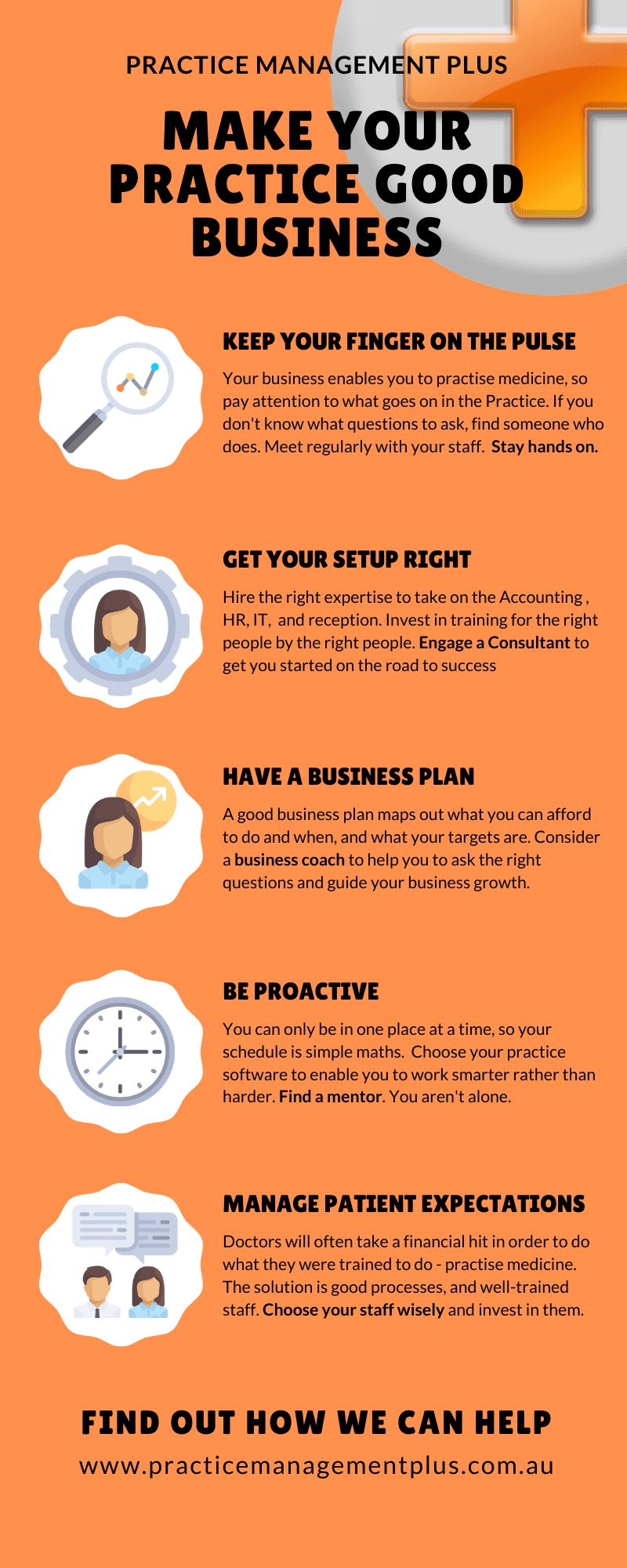Whether you are an solo practitioner or a growing medical practice, Fiona can help you. Continue reading
Tag: medical practice
Calling for Backup!
PulseIT today reported that Melbourne Health Group, a specialist cardiology practice located at Cabrini Health’s hospital at Malvern, was hit by a ransomware attack that encrypted their practice data. It’s not the first time we have seen this lapse in patient data security and it won’t be the last. So how is your practice data backup health?
Do you know the when, what, how, where and who of your practice backup?
When does your backup take place? Is it scheduled regularly enough that you could recover adequately if your datafile was lost?
What data is included? Does your backup include multiple copies of your practice data?
How is it collected? Do you have to run it manually? Does it warn you if it doesn’t proceed successfully?
How far back does it go? If you lost yesterday’s datafile, could you go back to an earlier copy?
Where is it stored? Is your only backup copy located on your network, where it is vulnerable to cyber-attack? Is it in the cloud – and if so, does its storage comply with the Australian Privacy laws?
Who is responsible for monitoring it? Many IT set and forget. Many practices assume the backup is working and only when disaster strikes do they realise their error.
Your backup is YOUR responsibility, but there is help available to ensure you have good processes in place to keep things safe and running smoothly. It is all part of having a good disaster recovery plan in your Practice Manual.
For a practice health check to improve your patient data security, contact Practice Management Plus for guidance and implementation support.
Make Your Medical Practice Good Business
“I just want to practise medicine”. Sound familiar? Being a great doctor doesn’t automatically translate into being a great businessperson, however, many doctors end up as business owners. To be successful, make your medical practice a good business.
So, here are our top five tips to turn your medical practice into a successful business:
-
Keep your finger on the pulse
Practising medicine means taking care of patients first; this is where your training, skills and interests lie. After all, if you had been interested in business you would have opened a shop, right? Remember that your business enables you to practise medicine, so you need to have a plan and pay attention to what goes on in the Practice. Nobody cares about the success of your business as much as you do.
-
Get your setup right the first time
Doctors study for longer than any other profession yet many of your business skills are learned by trial and error after you have already set up practice. Practising medicine is what they trained you to do and you aren’t expected to be the expert in every aspect. Hire good staff or use agencies to take on the Accounting (Billing, and interpreting financial reports), HR (hiring and managing staff), IT (computers and software) and reception. Invest in training for the right people by the right people.
-
Have a Business Plan
Medicine is a fee for service industry, i.e. a doctor must see patients in order to charge a fee. For a solo doctor practice, you are entirely responsible for the business income, and this puts the focus on clinics, appointments, and surgeries to earn an income and pay staff, leaving business activities a poor second. A good business plan is essential to map out what you can afford to do and when, and what your targets are. Review how many patients you are currently seeing multiplied by your average fees, less your costs. Determine whether your current fees will cover the costs associated with running your practice. Predict your income.
-
Be proactive rather than reactive
Waiting lists can be months long. When patients are piling up to see you, you work harder and longer to meet the demand. And this can leave even less time for family and sleep, let alone business tasks. Be proactive rather than reactive. You can only be in one place at a time, so your schedule is simple maths. Review how long it takes to perform your appointments, including any dictation of letters. Look for efficiencies your practice software can offer to enable you to work smarter rather than harder, and then determine how many patients can realistically be seen in one day. Utilise your practice software waiting list feature where available and monitor your ‘next available’ appointment date. It will tell you whether you might need to share the load with a colleague (session rent your consult room) or put on an extra half day clinic once a month.
-
Manage Patient Expectations
Medicine is a “caring” profession. In patient-speak, this roughly translates into “why do I have to pay for that?”. No specialist wants to haggle over fees for surgery or turn away pensioners who ask to be bulk-billed. Since services are not something you can take back if the patient refuses to pay, doctors will often take a financial hit in order to do what they were trained to do – practise medicine. The solution is accurate quotes, accepting deposits prior to surgery, and staff, well trained in managing patient expectations.
What is good business?
Practice Managers commonly ask, “what reports should I be providing?”
I answer, “What does the doctor or business want to know?”
Unfortunately, not all practice managers are equipped to run a business and assume that the doctor knows what they are doing. The doctor doesn’t always know what to ask for. So, here are some things to consider, just for a start:
What is your current position?
- How many patients are seen each week?
- What is your current gross income?
- What is your total expenditure (including wages)?
- How many new referrals are received each month?
- What is the ratio of new to review appointments?
- How many referrers do you have? Is this number growing?
- How do patients hear about your services?
- Do you have any unpaid accounts building up?
- Are your billing practices compliant with Medicare?
- What is the timeframe for outgoing practice correspondence?
Your practice software can typically provide answers to all these questions and much more. So, it is imperative that you choose the right software to meet your needs.
Also, any agreed processes should be documented in a Practice Manual – a living instructional document that guides the staff on how to implement your business plan. This will include processes for everything from day-to-day activities to monthly and annual reporting, from financial accountability to roles and responsibilities.
Where to find help?
-
Choose staff wisely.
- Decide if you need a Practice Manager with business skills or clinical skills. Multi-skilled Practice Managers are in high demand and worth every cent.
- Invest in staff training. Once you find the right person, you can help them build all the skills they need to support the successful growth of your business.
- Get a Business Coach. A business coach will help you to ask the right questions and help guide your business growth. Your business skills will grow as your business grows and your business will grow as your skills grow. That’s a win-win!
- Find a mentor. You aren’t the first doctor to find yourself as a business owner. Ask your colleagues, ask professional bodies – find a senior doctor with a successful practice who is willing to help you avoid early problems. You aren’t alone in this.
- Engage a consultant. Consultants provide short- and long-term help to setup your practice, train your staff, write a practice manual, and get you started on the road to success.
- Stay hands on. If you don’t know what questions to ask, find someone who does. Meet regularly with your staff. Request reports from your practice manager and monitor your billing activities. Keep up with daily activities. You need to know what is being done and why. At the end of the day, you are held responsible for the mistakes support staff make.
Need help to make your Medical Practice a good business? Contact us.

Consulting Services
If you are undergoing change to new software, new premises, new staff or just have a big project on the boil, an experienced consultant can make all the difference.
Welcome to Practice Management Plus
Is it time for a change?
For a fresh perspective on what is old and what is new
in Practice Management Software,
book a call with Fiona
at https://calendly.com/fionapmplus




